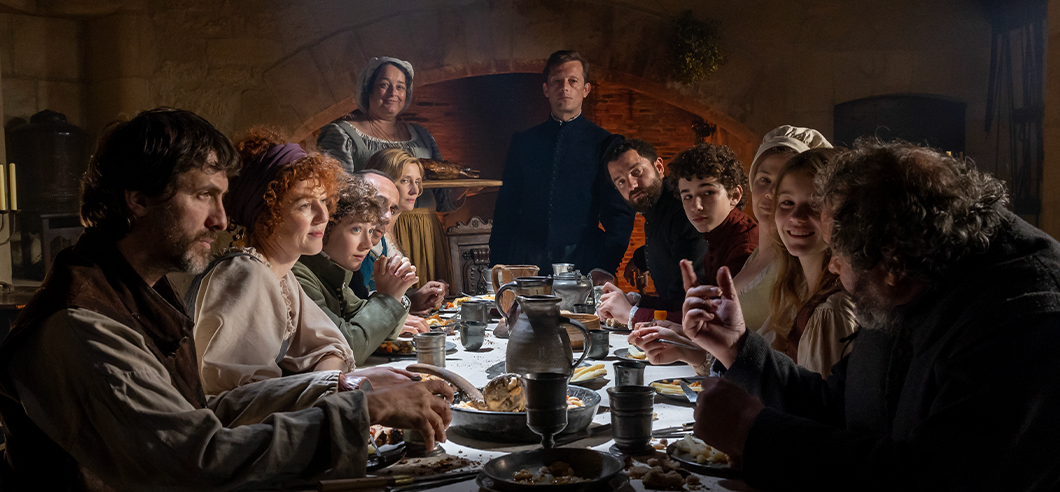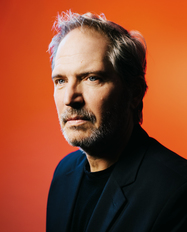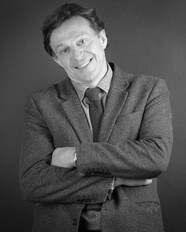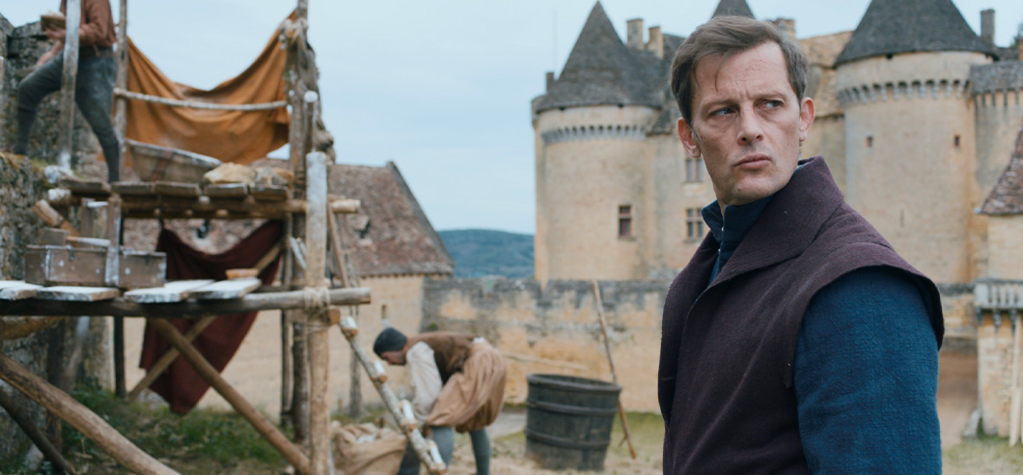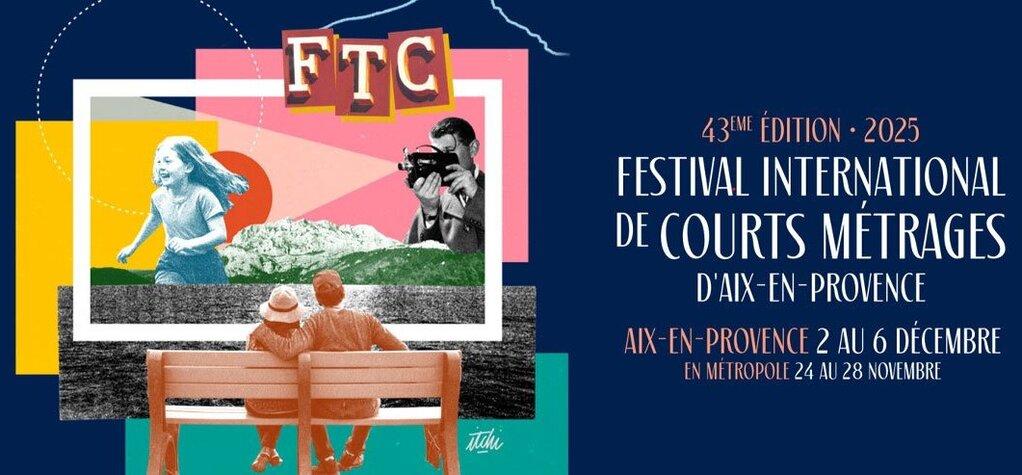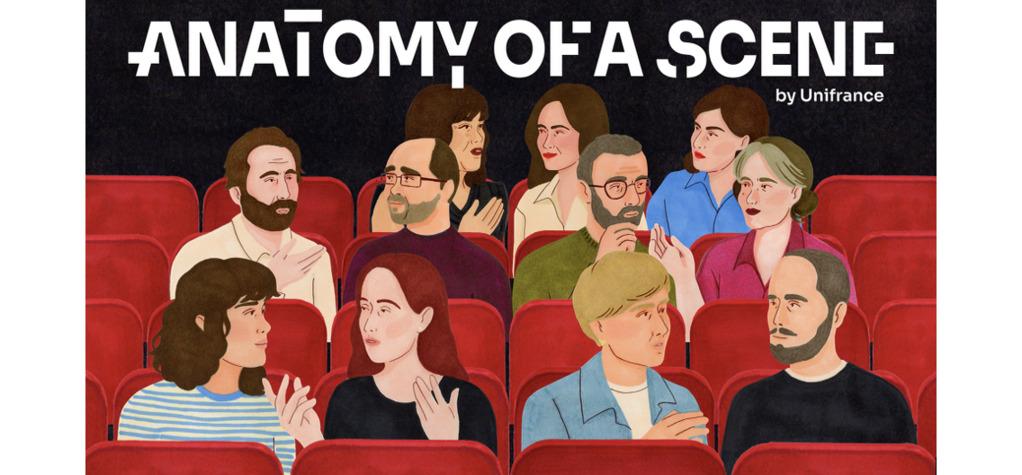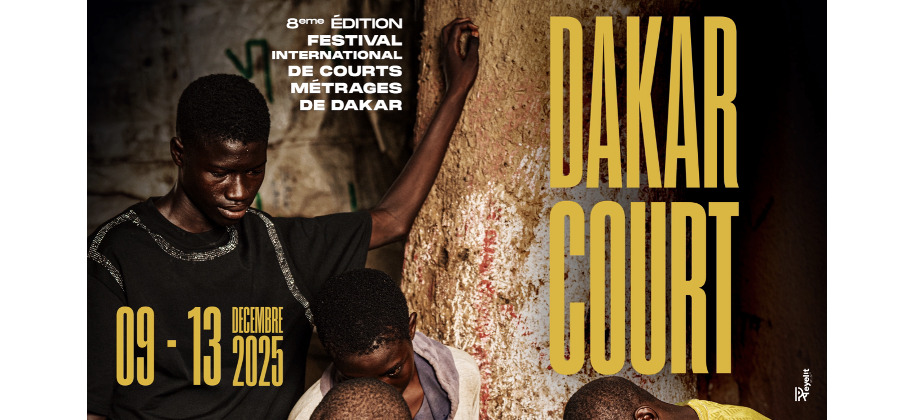Adapted from Fortune de France, a renowned literary saga, The Huguenots is both a historical series that plunges viewers into the heart of the 16th-century wars of religion, and a family story.
Director Christopher Thompson, producer Jean Cottin (Les Films du Cap), and Julia Schulte, head of international sales at France tv distribution, talk about the strengths of this serial adaptation, with its remarkable setting and cast, and the contemporaneity of the issues it tackles.
Unifrance: What inspired you to bring Robert Merle's historical saga to the small screen? What is your personal relationship with these novels?
Christopher Thompson: I read Fortune de France when I was a teenager. I remembered the emotion of the initiation novel, the family saga, a country plunged into civil war and looking for a way forward. I had long thought that this would be a rich source for a series that would tell the great timeless themes of family stories via an era that appears to be a distant mirror of our own. This first season focuses on a great love story thwarted by conflicting beliefs, and the coming-of-age of a generation that must learn to maintain its humanity in a polarized and violent world.
To what extent did you remain faithful to the narrative of the novels, and how did you also distance yourself from it?
C.T.: The novel is constructed as a chronicle, which is a difficult form of storytelling to adapt to the screen. From the novel, my co-writers and I drew on the abundant gallery of characters, the daily life of a family in a world in chaos. And a certain musicality to the dialogue. But we also worked hard to rewrite the characters, especially the women, in the light of issues that are shaking up contemporary society: the place of women, the rejection of otherness, the rise of intolerance. I think we've taken a lot of liberties and strengthened the dramatic stakes, while remaining faithful to the humanist spirit of the novel.
This is your second series project, following the success of Bardot in 2023. What do you like about the serial format? What did it allow you in terms of the writing for The Huguenots?
C.T.: The series format offers great freedom in terms of storytelling, with the possibility of following characters over time, allowing them to grow and evolve. I also like the idea of reviving the serial tradition reminiscent of the sagas of Alexandre Dumas or Charles Dickens.
You've made a link between this story and a classic Western. Was this something you had in mind for the mise en scène? What were your inspirations in general?
C.T.: The reference to the Western was something we'd been thinking about right from the writing phase. In this isolated château, far from the capital, there's something reminiscent of the besieged fort often evoked in films depicting the mythology of the "conquest" of the West. There's a closeness to nature, to wide-open spaces. As in the Western, we're in a world that dictates its own rules and partially escapes central authority. During the shoot, references to Westerns continued to assert themselves, particularly the films by John Ford. In fact, there's a direct reference to Ford's Fort Apache, from which the wedding sequence is inspired.
How did you go about assembling the artistic team around the project, and in particular the remarkable cast?
Jean Cottin: Christopher Thompson surrounded himself very quickly and very early on with a team of experienced location managers, including Benoît Cisilkiewick for set design, Benoît Chamaillard for the cinematography, and Nathalie Chesnais, overseeing the costumes, who had previously worked on those in Queen Margot.
The goal of our artistic approach was to achieve a very realistic rendering, emphasizing the fact that The Huguenots is a story of daily life in a provincial château, rather than in the royal palaces of the capital.
As for the casting, Thompson and casting director Michaël Laguens did a lot of preparatory work beforehand. The Huguenots tells the story of a family, the Sioracs, with masters and servants. We have a large cast of three generations of actors: children, teenagers, and adults.
First, we prioritized the choice of the duos that make up the cast. Starting with the duo of the Lords of Mespech with Jean de Siorac and Jean de Sauveterre. We wanted Nicolas Duvauchelle and Guillaume Gouix for these roles from the outset. We also have the Siorac duo, Jean and Isabelle. The casting challenge was to introduce a new face to the general public, which led to the choice of Belgian actress Lucie Debay. Last but not least, we have the "villain" duo with the roles of Baron de Fontenac, played by Grégory Fitoussi, and Gamelin, played by Antoine Gouy.
The rest of the cast was assembled like a theater troupe. A special feature of The Huguenots is that it brings to life the community of members of the Château de Mespech.
The landscapes of the Périgord region, the château, the stunning horse rides, and the costumes are impressive. How did you find the locations for the shoot? How did you go about the historical research needed to faithfully recreate 16th-century France?
J.C.: We were committed on the artistic and production level to shoot the series entirely in natural settings, in the settings of the story imagined by Robert Merle.
The series was hence shot entirely in the Périgord region, notably in two châteaux that served as backdrops for the series. Château de Fénelon was transformed into Château de Mespech, and Château de Beynac became Château de Fontenac.
We also recreated Sarlat's central square in 1567, using the Château de Biron as an open-air studio. Most of the interiors were shot at Château des Bories, also in Périgord.
Another particular aspect of The Huguenots, for a historical series, is its extensive use of natural exterior sets, which supports the series' realism. 65 percent of the series was shot on natural exterior sets. And 100 percent in natural settings.
The writing was supported by historical research by Baptiste Roger-Lacan, co-writer of the series and an associate professor of history, who added many realistic and historically accurate details of daily life to the series.
Do you have any anecdotes about the film shoot that you'd like to share?
J.C.: With regard to the production, we were faced with a shortage of period costumes in Europe. We therefore had to set up a costume atelier six months before shooting began, in order to create the many costumes the series demanded.
This work blends historical narrative and intimate storytelling, making the subject very universal. What are its key features that will appeal to the international market?
Julia Schulte: The Huguenots is, in fact, an exceptional historical series that reconfigures its genre: by blending the captivating and cruel history of the war of religions in Europe and the external threat that haunts the Huguenots, with a family story and its generations, the series throws us right inside a conflict that is played out within the couple, between the parents and the children (who play a very important role), inside the Château de Mespech, offering a very strong dramatic dimension. The series has been produced with great ambition, shot in historic locations: the château and the exceptional surroundings of the Périgord. It takes us into villages, into forests; it also borrows the codes of cloak-and-dagger films, but with a modern twist. With Nicolas Duvauchelle and Guillaume Gouix in the lead roles, this universal story is embodied by an exceptional cast who already have established movie careers, which reinforces its international potential.
What are your ambitions for the series? Are you targeting specific territories or audiences?
J.S.: The Huguenots is aimed at a very broad audience: its multi-generational heroes will appeal to a family demographic. Its eclectic cast and ambitious direction also make it a series for fans of sagas and adventure series. As a distributor, we have interests and negotiations underway with streaming platforms, as well as with free-to-air and pay broadcasters, depending on the territory.


